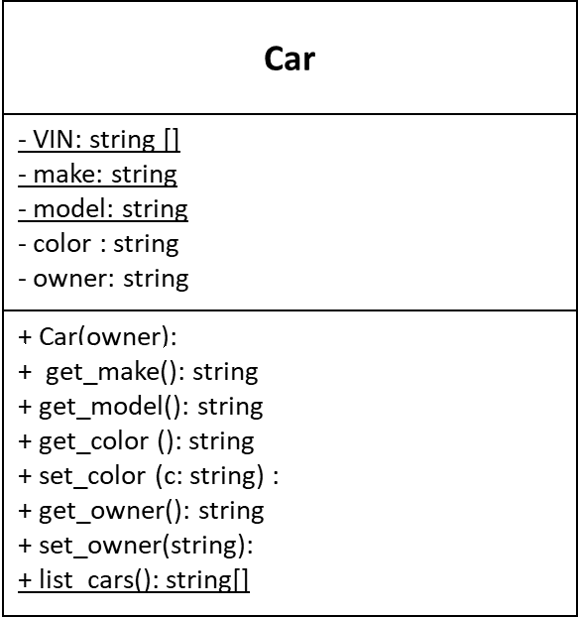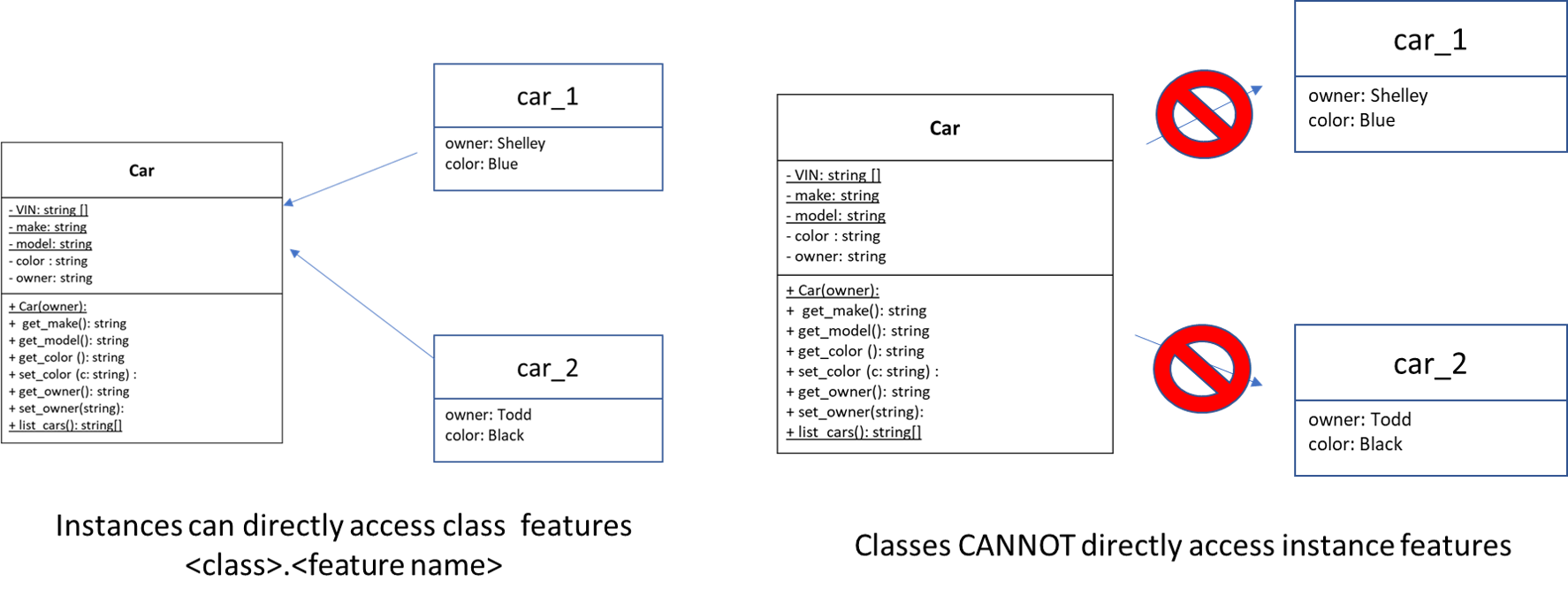Class Features
Class Attributes
Consider the above UML for a car. It has 3 “class level” attributes, those underlined in the UML. These are variables that belong to the class, not a particular instance, and thus are shared by all the instances. Class features are denoted by an underline on the UML.
The Ford F-Series truck is a well selling truck model. If we were to write a program dealing with the manufacture and sales of this truck, we would have millions of instances. If each instance had instance attributes for make and model we would waste billions of bytes of memory. By making this a class-level attribute, all instances of the class have access to a single copy of the data.
Additionally, it would make sense that at the class-level, we have a list of all vehicle identification numbers (VIN). Keeping this information at the instance level would be horrifically inefficient. Every time we produce a new car each instance of the class would have to be accessed, and a a new entry added. Not only is it a waste of time, it means we are keeping millions of copies of a list of millions numbers–oh yes, and we’ll need a way to ensure each list in each instance always match.
Direct Access is One-way
All instances have direct access to their classes class-level attributes (and methods). There will be language specific syntax for this. However, class-level features do not have direct access to an instance’s features.
Class Methods
As previously discussed, class methods are denoted on the UML diagram by an underline. Class methods will have language specific syntax for accessing other class-level features. If access to an object is required, that object is

